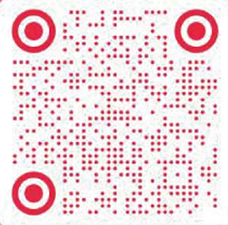Duration: 2015.09.03 -- 2015.09.18
Location: Today Art Museum,3/F Exhibition Hall of Building No.1
A Pilgrimage To The Future — The 3D Painting Exhibition of Réal Fournier
In the 21st century, artists around the globe have been searching for a way out for art. What used to be classics in art history are no longer worshiped. Art becomes the presentation of pure sensory stimulation, or even falls into mediocrity of dull mechanical repetition or grotesque ideas and behaviors, with which artists are trying to steal the show. “Everyone is an artist” has become an ironic slogan. Vacuous names, instead of classic works, are left behind contemporary art. The celebrated scholar Yin Jinan once appealed, a serious artist should avoid being a star or being captured by capital. That’s a rare sober voice. A common feature shared by true artists, local or international, is the pioneering initiative to propel the development of art. They are fated to be alone. The only warmth should come from their works, just to warm our hearts. They march alone with no fans around them.
It’s a combination of Futurism and Cubism – that’s my intuitive impression of Réal Fournier’s works. This might be a little bit subjective. In 1907, Georges Braque and Pablo Picasso established Cubism. Starting it from Paris, artists began to deconstruct and recreate daily objects so as to provide the audience with more unrealistic art forms, and therefore, they had released their emotions to an unprecedented extent. Braque’s Houses at L’Estaque (1908) and Picasso’s Les Demoiselles d’Avignon (1907) are masterpieces of the system. Cubism had broken the mechanical way that people accepted the real world. People started to shiver with the sensation that came with artists’ emotional expression. Similarly, as an appalling anti-traditional art form, Futurism, which spread to Italy in 1911, influenced all fields – not merely painting – including sculpture, design, architecture and city construction. It was initiated by poets and litterateurs, who had poured their rebellious passion into their works, where we can sense the power of subversion. Due to its existence, almost all the isms were broken in the late modernism, and hence there was no boundary left in art.
All these are rooted in the fact that art is subject to history and moves forward with it continuously. Better genes are being retained while new breakthroughs are waiting. With the development of civilization and the advancement of science and technology, new materials are constantly being explored and discovered. Our senses have been completely subverted after we step from the industrial age into the digital era. Painting is more than a simple act to depict objects in front of us, and neither is the realistic technique of the classics the only channel of expression. People’s eyes and brains are to be occupied by new materials and perceptions. All these are revolutionary to traditional art forms.
Naturally, art enables people to experience all kinds of human emotions. However, the piece of artwork needs to be created and displayed by artists to do its job. As a devoted guide, Réal Fournier shows the amazing power of technology, and more importantly, urges people to reflect on themselves. Peace, calmness; no war, no killing; sunshine and love is the eternal theme that he expresses incisively and vividly. As some foreign media put it, he turns a dream into art and presents it to people. The dream will be realized in the near future. His love for nature comes above anything else, which is so deep that he is fully motivated to elaborate his inner feelings through the painting brushes, and with the help of special equipment, the audience are able to walk into his, or maybe also their own hearts.
Of all his paintings, A Land to Save is my favorite, with a deer and a plane in the foreground and the undefined space indicating the future. It is brightly colored and carries a shade of melancholy, yet it does not cast any desperation. On the contrary, the different layers allow the audience to imagine the possibility of being involved. We can perceive our own strength, believing that everyone is capable of salvation. I suppose, that’s exactly what the painter wished to express.
The art forms around the world tend to be oriental after years of development. After Post-modernism, artists around the globe begin to reflect: how much has been cast away while we are inheriting? What’s the point of individualization? Do we still care about the Classics? Where is art going in the future? Will the Orient brew a miracle for art with its rich cultural accumulation? Or we should say we are actually part of art.
Today Art Museum, Building 4, Pingod Community, No.32 Baiziwan Road, Chaoyang District,Beijing. Tel: 010-58760600
Opening Hours:10 am - 6 pm: closed every Monday and during Spring Festival(2.13-2.23).
© 2005-2023 Today Art Museum
京ICP备13015009号-1
Tech Support:Today Digital Art Museum











